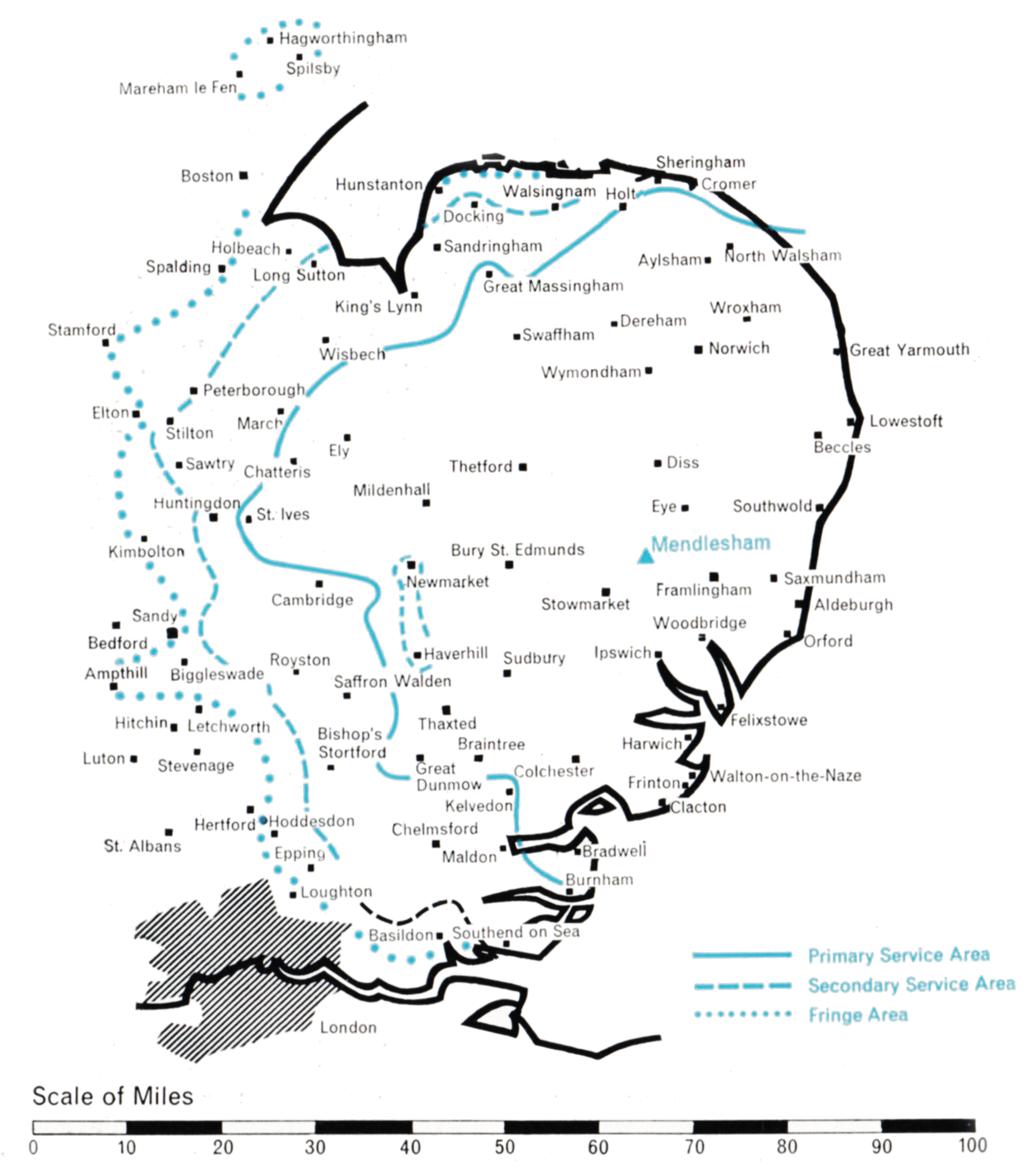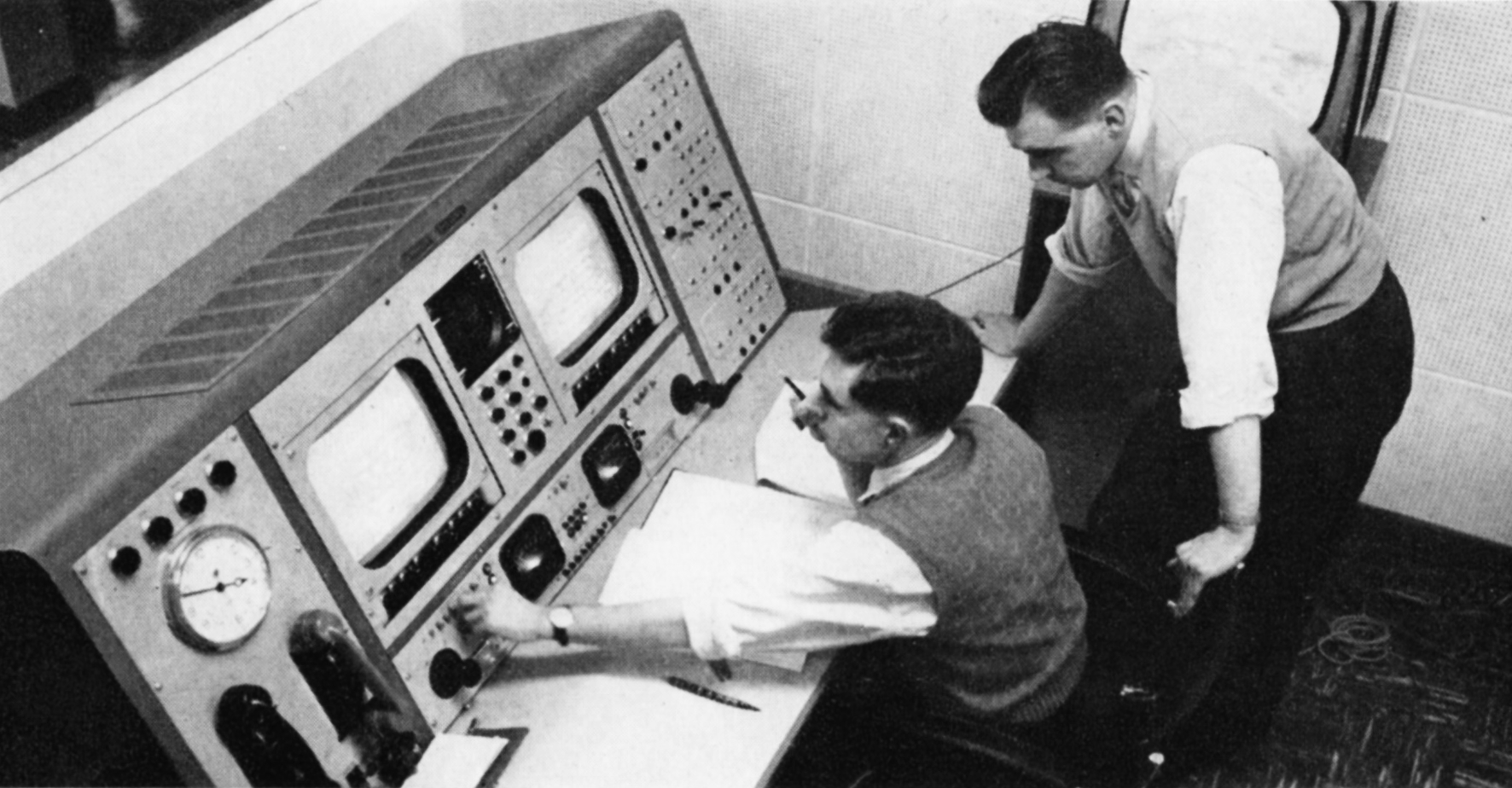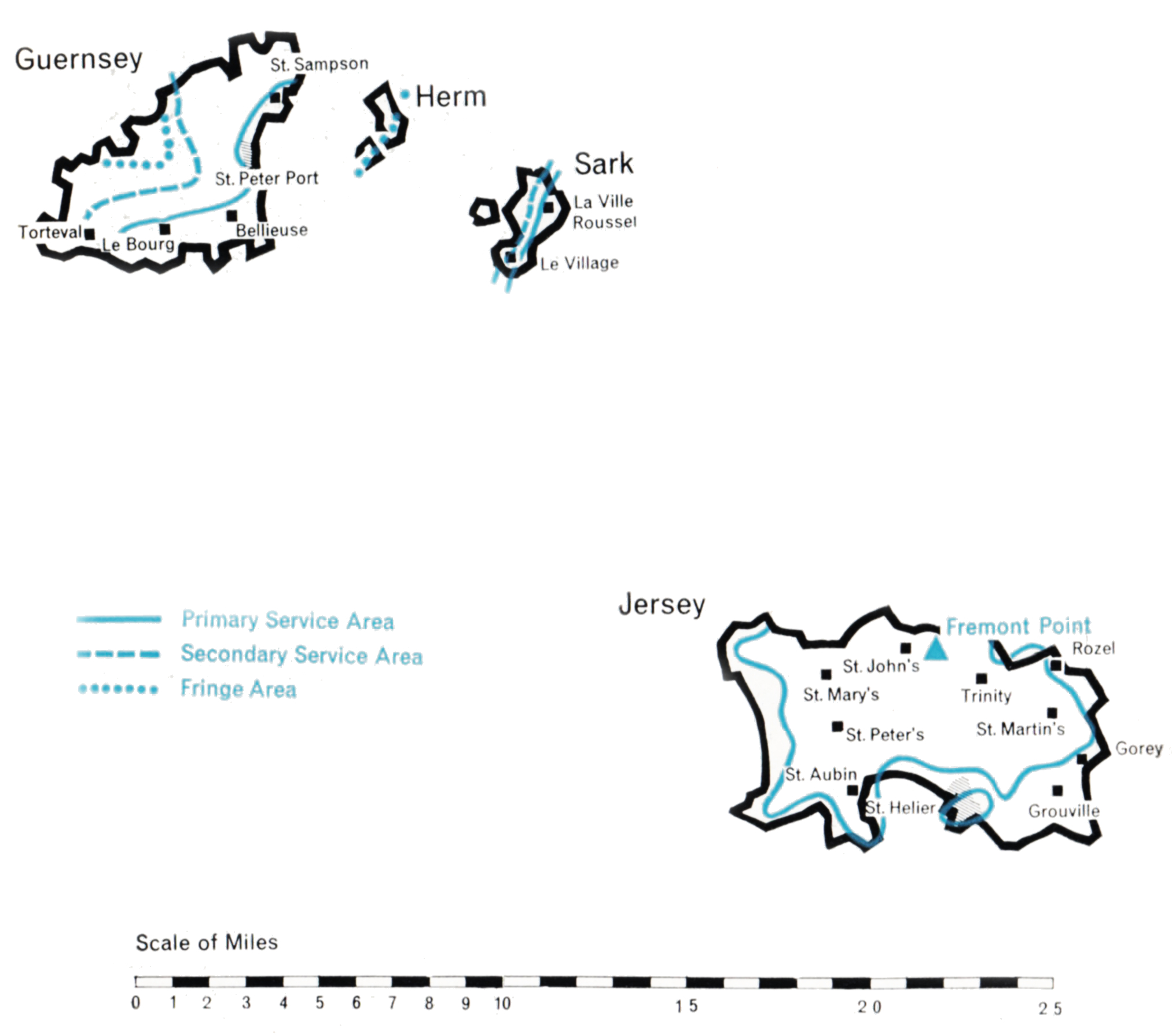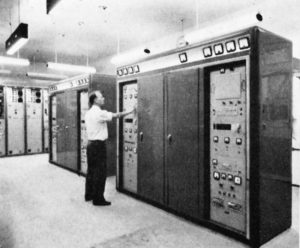Sections 3, 4, 5 and 6
3. General provisions as to programmes and publications of Authority
(1) It shall be the duty of the Authority to satisfy themselves that, so far as possible, the programmes broadcast by the Authority comply with the following requirements, that is to say —
(a) that nothing is included in the programmes which offends against good taste or decency or is likely to encourage or incite to crime or to lead to disorder or to be offensive to public feeling or which contains any offensive representation of or reference to a living person;
(b) that the programmes maintain a proper balance in their subject-matter and a high general standard of quality;
(c) that any news given in the programmes (in whatever form) is presented with due accuracy and impartiality;
(d) that proper proportions of the recorded and other matter included in the programmes are of British origin and of British performance;
(e) that the programmes broadcast from any station or stations contain a suitable proportion of matter calculated to appeal specially to the tastes and outlook of persons served by the station or stations;
(f) that due impartiality is preserved on the part of the persons providing the programmes as respects matters of political or industrial controversy or relating to current public policy; and
(g) subject as hereinafter provided in this subsection, that no matter designed to serve the interests of any political party is included in the programmes:
Provided that nothing in paragraph (g) of this subsection shall prevent —
(i) the inclusion in the programmes of relays of the whole (but not some only) of a series of the British Broadcasting Corporation’s party political broadcasts;
(ii) the inclusion in the programmes of properly balanced discussions or debates where the persons taking part express opinions and put forward arguments of a political character.
(2) It shall be the duty of the Authority to secure the exclusion from any publications which they may issue and, without prejudice to the generality of the provisions of subsection (1) of this section, from the programmes broadcast by them, of all expressions of their own opinion as to any of the matters referred to in paragraph (f) of the said subsection (1), or of the opinion as to any such matters of any of their members or officers, or of the opinion as to any such matters of any programme contractor or, in the case of a programme contractor which is a firm, of any partner therein or, in the case of a programme contractor which is a body corporate, of any director or officer thereof or person having control thereof.
(3) Nothing shall be included in any pro gramme broadcast by the Authority, whether in an advertisement or not, which offers any prize of significant value, whether competed for or not, or any gift of significant value, being a prize or gift which is available only to persons receiving that programme, or in relation to which any advantage is given to such persons.
(4) Except with the previous approval of the Authority, there shall not be included in any programme broadcast by the Authority —
(a) any religious service or any propaganda relating to matters of a religious nature;
(b) any item, whether an advertisement or not, which gives or is designed to give publicity to the needs or objects of any association or organisation conducted for charitable or benevolent purposes.
4. Advertisements
(1) The programmes broadcast by the Authority may, so long as the provisions of this Act are complied with in relation thereto, include advertisements inserted therein in consideration of payments to the relevant programme contractor or, in the case of an advertisement included in a programme or part of a programme provided under paragraph (b) of subsection (2) of section two of this Act, to the Authority.
(2) Orders for the insertion of the said advertisements may be received either through advertising or other agents or direct from the advertiser but neither the Authority nor any programme contractor shall act as an advertising agent.
(3) It shall be the duty of the Authority to secure that the provisions of the Second Schedule to this Act are complied with in relation to the advertisements included in the programmes broadcast by the Authority, whether provided by programme contractors or by the Authority.
(4) After consultation with the Authority the Postmaster-General may make regulations by statutory instrument amending, repealing, or adding to the provisions of the said Schedule.
(5) Without prejudice to any of the duties incumbent on the Authority otherwise than under this subsection in relation to advertisements, it shall be the duty of the Authority to consult from time to time with the Postmaster-General as to the classes and descriptions of goods or services which must not be advertised and the methods of advertising which must not be employed and to carry out any directions which he may give them in those respects.
(6) Nothing shall be included in any programmes broadcast by the Authority, whether in an advertisement or not, which states, suggests or implies or could reasonably be taken to state, suggest or imply, that any part of any programme broadcast by the Authority which is not an advertisement has been supplied or suggested by an advertiser; and, except as an advertisement, nothing shall be included in any programme broadcast by the Authority which could reasonably be supposed to have been included therein in return for payment or other valuable consideration to the relevant programme contractor or the Authority:
Provided that nothing in this subsection shall be construed as prohibiting the inclusion, in any part of a programme broadcast by the Authority which is not an advertisement, of any of the following matters, that is to say:—
(a) items designed to give publicity to the needs or objects of any association or organisation conducted for charitable or benevolent purposes;
(b) reviews of literary, artistic or other publications or productions, including current entertainments;
(c) items consisting of factual portrayals of doings, happenings, places or things, being items which in the opinion of the Authority are proper for inclusion by reason of their intrinsic interest or instructiveness and do not comprise an undue element of advertisement;
(d) announcements of the place of any performance included in the programme, or of the name and description of the persons concerned as performers or otherwise in any such performance, announcements of the number and description of any record so included, and acknowledgments of any permission granted in respect of any such performance, persons or record;
(e) such other matters (if any) as may be prescribed by regulations made by the Postmaster-General by statutory instrument after consultation with the Authority.
or as prohibiting the inclusion of an advertisement in any programme broadcast by the Authority by reason only of the fact that it is related in subject-matter to any part of that programme which is not an advertisement.
(7) Before making any regulations under this section the Postmaster-General shall lay a draft thereof before each House of Parliament, and shall not make the regulations until a resolution has been passed by each House of Parliament approving the draft.
5. Contracts for programmes
(1) It shall be the duty of the Authority to do all that they can to secure that persons who are disqualified persons as defined in this subsection do not become or continue as programme contractors, either alone or in partnership with other persons.
In this subsection, “disqualified person” means a person who —
(a) being an individual, is not ordinarily resident in the United Kingdom, the Isle of Man or the Channel Islands, or being a body corporate, is incorporated under the laws of any country outside the United Kingdom, the Isle of Man and the Channel Islands; or
(b) being an individual or a body corporate, carries on business as an advertising agent (whether alone or in partnership), or has control over any body corporate which carries on business as an advertising agent, or is a director or officer of any such body corporate, or is employed by any person who carries on business as an advertising agent;
(c) being a body corporate, is under the control of any such person as is mentioned in the foregoing paragraphs of this definition, or of any two or more such persons together, or has among its directors, officers or servants any person who is a disqualified person otherwise than by virtue of paragraph (a) of this definition.
(2) It shall be the duty of the Authority to do all that they can to secure that there is adequate competition to supply programmes between a number of programme contractors independent of each other both as to finance and as to control.
(3) It shall be the duty of the Authority to do all that they can to secure that no programme contractor acquires any exclusive or other rights in respect of the broadcasting of any matter in sound only from stations in the United Kingdom, the Isle of Man or the Channel Islands, other than matter which is to be so broadcast in a programme or part of a programme provided by him under this Act.
(4) No contract and no interest in a contract between a programme contractor and the Authority shall be assignable either in whole or in part without the previous consent in writing of the Authority.
(5) The Authority may require from time to time from the programme contractor such declarations, returns, documents and other information as the Authority may consider necessary or advisable for the purpose of ensuring that the requirements of this Act are complied with.
6. Special provisions to be included in contracts
(1) The contracts between the Authority and the various programme contractors shall contain all such provisions (including provisions for the purposes set out in the Third Schedule to this Act) as the Authority think necessary or expedient to be inserted for complying and securing compliance with the provisions of this Act and any restrictions or requirements imposed thereunder in relation to the programmes provided by the programme contractors:
Provided that the Authority shall not be enabled by any such contract to exercise any such power as is referred to in the said Third Schedule unless they are satisfied that it is necessary to do so having regard to a breach which they apprehend on the part of the programme contractor of any provision included in the contract in pursuance of this subsection.
(2) Every such contract shall in particular contain such provisions as the Authority think necessary or expedient as aforesaid for the payment by the programme contractor to the Authority of sums by way of penalty in the event of such breaches of his contract as may be specified in those provisions, and any such provision as is mentioned in this subsection shall be valid and enforceable in accordance with the terms thereof notwithstanding any rule of law restricting the cases in which or the extent to which provisions for penalties are legally enforceable:
Provided that every such contract shall be such as to secure —
(a) that the maximum penalty which may be demanded by the Authority by virtue of this subsection in the case of any breach shall not exceed five hundred pounds on a first occasion, one thousand pounds on a second occasion, or one thousand five hundred pounds on any subsequent occasion; and
(b) without prejudice to the power of the parties to agree upon any wider form of arbitration provision, that any dispute whether any such breach of contract has occurred as to give rise to a liability to such a penalty as aforesaid, or as to the amount demanded by way of penalty in respect of any such breach, shall be determined by arbitration.
(3) without prejudice to the previous provisions of this section, every contract between the Authority and a programme contractor shall contain a provision reserving to the Authority an absolute right, if, in view of any breaches by the programme contractor of his obligations under his contract with the Authority, the Authority, after giving the programme contractor a reasonable opportunity of making representations with respect to the matter, think it necessary so to do, to serve on the programme contractor a notice in writing, taking effect forthwith or on a date stated in the notice, to determine or suspend for such period as may be specified in the notice or until a further notice is given the Authority’s obligation to transmit the programmes supplied by the programme contractor (without prejudice, however, to the programme contractor’s obligations as to the supply of programmes up to the date when the notice takes effect); and where a notice is given in pursuance of a right reserved in accordance with this subsection, the programme contractor shall not be entitled to any compensation from the Authority or to any refund of any sum previously paid by him or to any relief from any liability which has accrued at the date when the notice takes effect for any sums payable by him to the Authority:
Provided that the contract shall be such as to secure that no notice is given in pursuance of a right reserved as aforesaid unless such penalties as are mentioned in subsection (2) of this section have been paid or agreed to be paid or adjudged by arbitration to be payable by the contractor in respect of breaches of the contract occurring on at least three separate occasions.
(4) The provisions of this section relating to breaches of contract on the part of programme contractors shall be without prejudice to the right of the Authority to accept as a repudiation by a programme contractor any breach of contract by the programme contractor going to the root of the contract and to any other remedies of the Authority for the enforcement of their rights in respect of contracts with programme contractors, and shall not, except as expressly provided therein, affect the jurisdiction of any court in respect of such contracts.





